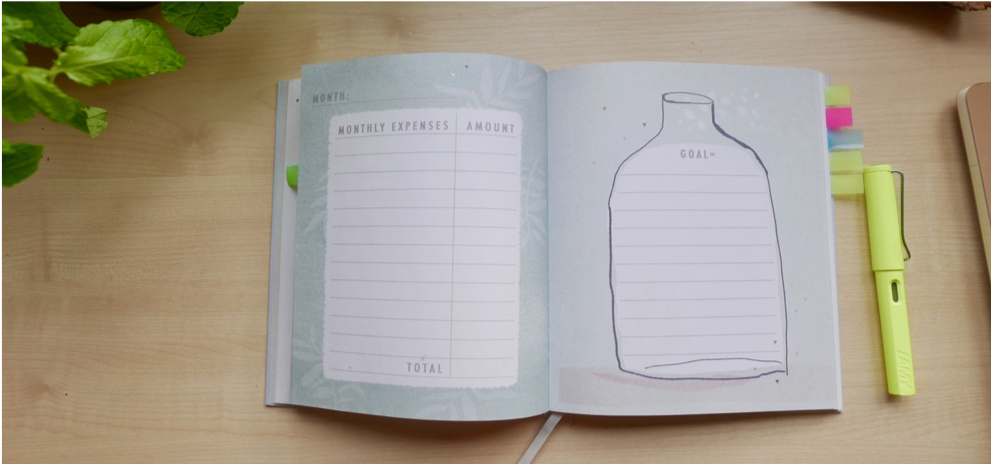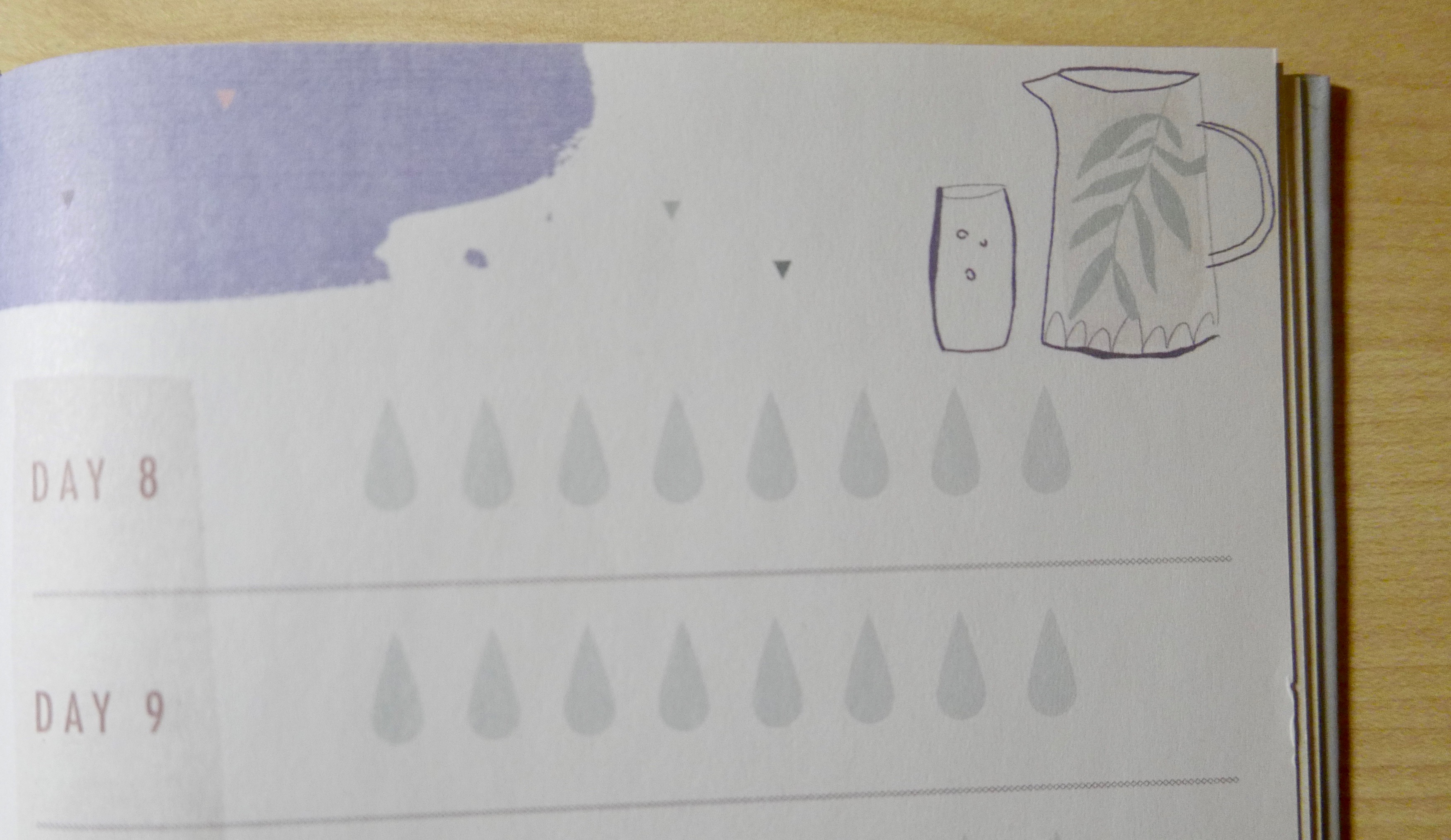Welcome to our new section, Thrive on Campus, devoted to covering the urgent issue of mental health among college and university students from all angles. If you are a college student, we invite you to apply to be an Editor-at-Large, or to simply contribute (please tag your pieces ThriveOnCampus.) We welcome faculty, clinicians and graduates to contribute as well. Read more here.
Wellness journals are becoming an increasingly popular product. Their promise of “reducing stress” and “improving physical and emotional well-being” has attracted the attention of people of all ages with one common goal: maintaining a balanced and healthy lifestyle in social contexts that, in many ways, seem to encourage the opposite.
A wide range of wellness journals exists. Some have rigid structures, such as fitness or nutrition journals, with pre-made charts to record your activity. Others are more “open canvasses,” such as reflection journals that help you build “positivity” and “gratitude.”
When I asked other students how they felt about the hype of wellness journals, and whether they would consider using one, I was faced with one very popular question:
“Do they actually work?”
Motivated by this question, I decided to try a wellness journal to understand if it could benefit my well-being. The journal I chose, “Happy Home, Happy Mind,” claimed to help “find your happy” and “make big changes in your mind.”
Ultimately, the experience left me with unexpected insights to improve my lifestyle, and hopefully yours!
Here are four of those tips.
Make Your Own Rules
When I sat down to begin my “wellness journaling journey,” I was overwhelmed. The journal contained 16 different sections and filling out each one daily felt like it would be a time-consuming and stressful task.
To minimize potential stress, I narrowed my focus to three interesting sections: Kindness, Budgeting, and Water Intake. Though overwhelming at first, concentrating on these sections helped me incorporate wellness journal writing into my daily routine.
Main Takeaway: You do not have to follow the structure and instructions of the wellness journal you buy. You’re embarking on this journey for yourself: No one will punish you for breaking the rules and making your own. Use the journal as a starting point for reflection, but don’t necessarily let the guidelines determine the course of your reflections — personalize the journal like I did to use it in the ways that work best for you.
Record Your Expenses
My experience with a wellness journal gave me valuable insights on personal finance management thanks to its “monthly expenses” section. On one page, you record your monthly expenses, and on the other you set a monthly budgeting goal.

Though each of my purchases during the first week were not in themselves high, added up, these small purchases put me far above the goal I had set for myself. The culprits? Coffee and sandwiches.
I am a huge coffee shop enthusiast. But it turned out that my four innocent mornings in coffee shops took a huge toll on my budgeting. And as with these coffee shop visits, my daily sandwich purchases for lunch also contributed in setting me above my weekly budget.
But through this tragic failure, I now know exactly what actions I need to take to make smarter financial choices and for those of you who might also wish to be more mindful in your daily investments. Here are two tips:
Rather than frequent coffee shop visits throughout the week, invest in a “travel mug” and make your own coffee. You can easily find a high-quality travel mug on Amazon for under $10. Similarly, instead of buying your own lunch, find a cool collapsible container set, and try cooking your meals at home before heading out for work. You can find a wide range of shapes/sizes of containers for great prices.
Main Takeaway: Include a section to record expenses for one week each month in your journal. This small change can show you where you might be wasting money, and help you understand how to reprioritize/rearrange your lifestyle to ensure you make smarter financial decisions.
Incorporate Acts of Kindness
The “kindness” section in my wellness journal consisted of empty boxes to fill out on a day-by-day basis with “one act of kindness” to do for someone in my life.
I decided to modify the format slightly, by dividing the boxes in two: one act for someone in my life, and one for myself. Though I literally divided these for organizational purposes, I believe the two are deeply intertwined; sustainably practicing kindness towards others can only truly occur when we begin forming a relationship with ourselves — when we give ourselves the time, space, and resources to feel loved.
The first day of my experiment, for example, I incorporated in my “kindness list” a phone-call to my grandmother, and an hour long walk alone, without my phone or computer to be alone with my thoughts.
Though I was quite skeptical at first about the idea of “scheduling kindness,” after only the first few days I felt energized by these moments and grateful to have made the time for them.
Main Takeaway: Include a “kindness to-do list” beside your work to-do list for one week each month in your journal. Incorporating acts of kindness to your day doesn’t make these acts less meaningful; rather, it will remind you how to give more meaning to your life and to those meaningful to you.
Keep Track of Water Intake
Surprisingly, I found the water intake section the most concerning.
As I was reviewing my nutritional history on the final day of the experiment, I identified several unexpected imbalances in my diet.
Water: I was not drinking enough. Studies on water intake generally state that the ideal water intake is around 12-15 glasses per day. On a good day, when I actively pushed myself to drink water, I drank 9-12 glasses. But on bad days, my water intake was as low as 5-6 glasses.

And that’s not all. I noticed that most water intake began after lunch, with the exception of mornings I exercised. Drinking water was simply not part of my morning routine.
Midway through my experiment, while working at my computer one afternoon, I realized that a factor greatly influencing my low and inconsistent water consumption was precisely my computer-usage: That day, I had gone 3 hours without drinking more than half a cup of water.
My computer time coincided with moments in my day when I forgot to drink water; the minimal waste of physical energy that computer-activity requires, combined with a deep immersion in work, disconnected and distracted me completely from my body.
But journaling water intake increasingly made me aware of moments in the day when I wasn’t meeting my daily goals and pushed me to take water breaks more consistently throughout the day.
Hydrating has now become the first thing I do in the morning.
Main Takeaway: Track your water intake for one week each month in your journal. If you’re not drinking 12-15 glasses per day, try to understand what factors are limiting your intake. Like me, perhaps your computer time coincides with minimal hydration. Documenting your daily hydration can ultimately highlight any unhealthy habits and help you change them to develop a more balanced consumption routine!
To Recap…
My experience using a wellness journal left me with four main tips to make journaling a more meaningful and life-changing experience:
1. Make Your Own Rules: You do not have to follow the structure and instructions of the wellness journal you buy. You’re embarking on this journey for yourself: No one will punish you for breaking the rules and making your own.
2. Record Your Expenses: Include a section to record expenses for one week each month in your journal to see where you might be wasting money so that you can reprioritize your lifestyle to ensure you make smarter financial decisions.
3. Incorporate Acts of Kindness: Include a “kindness to-do list” beside your work to-do list for one week each month in your journal.
4. Keep Track of Water Intake: Documenting your daily hydration one week per month can ultimately highlight any unhealthy habits and help you change them to develop a more balanced consumption routine.
Subscribe here for all the latest news on how you can keep Thriving.
More on Mental Health on Campus:
What Campus Mental Health Centers Are Doing to Keep Up With Student Need
If You’re a Student Who’s Struggling With Mental Health, These 7 Tips Will Help
The Hidden Stress of RAs in the Student Mental Health Crisis


